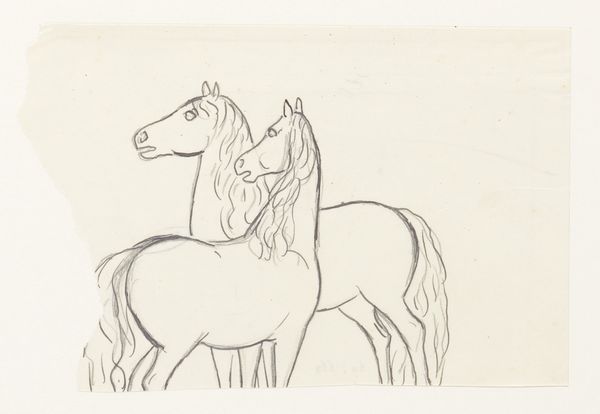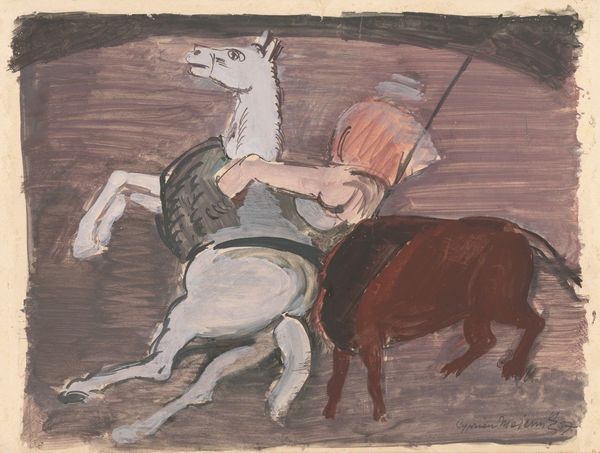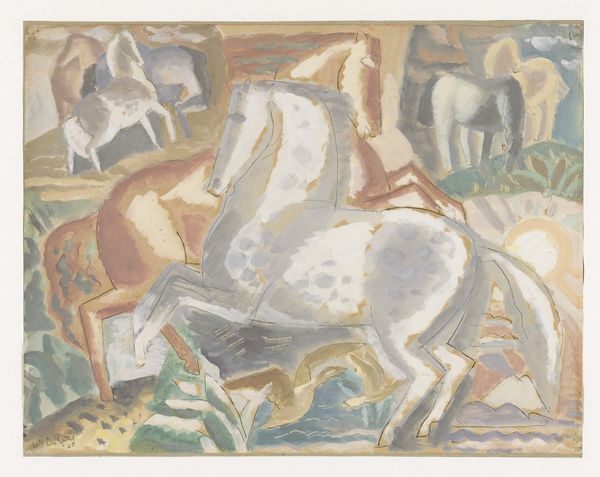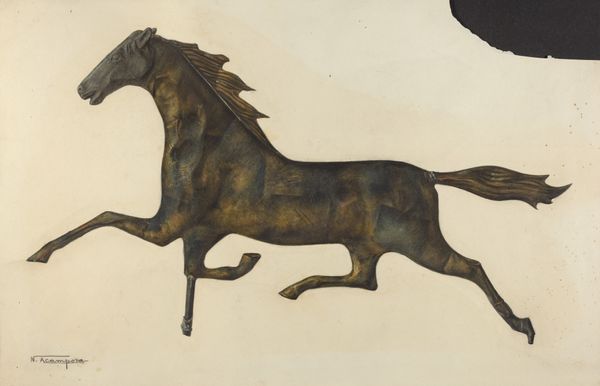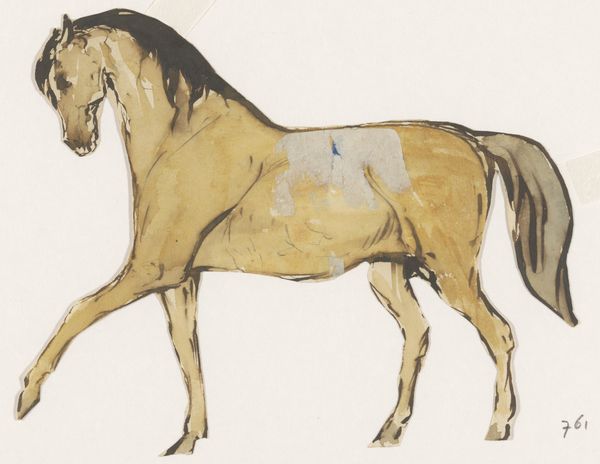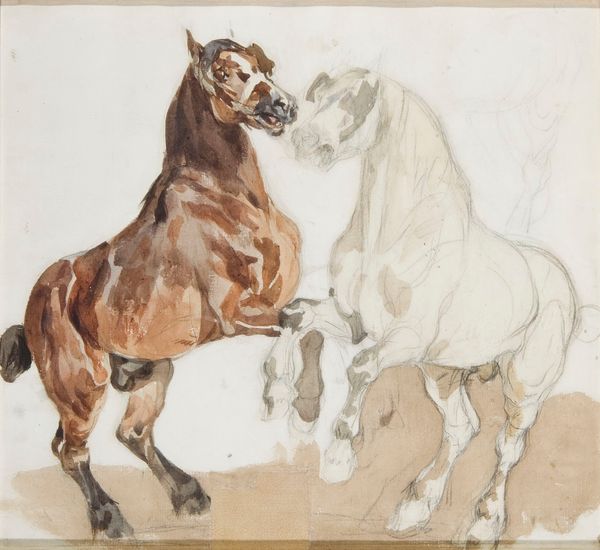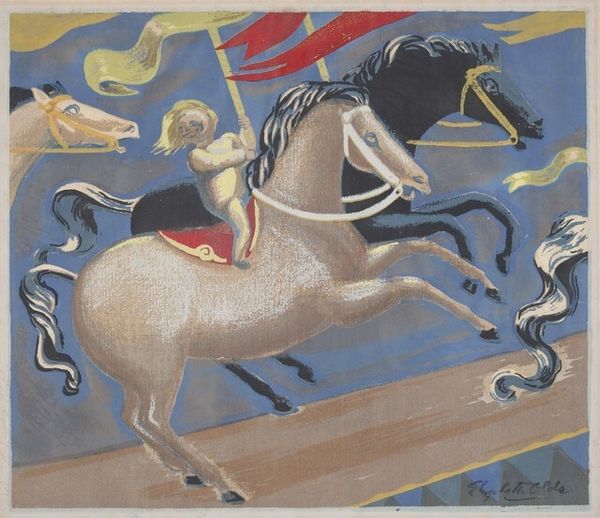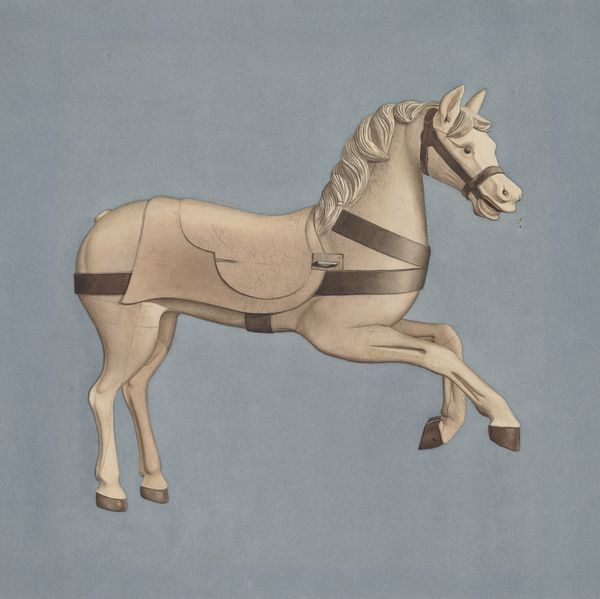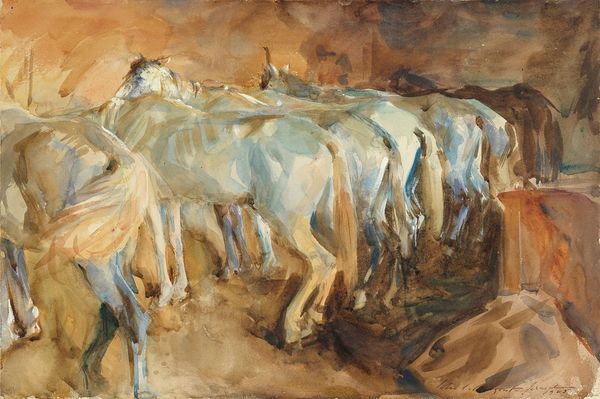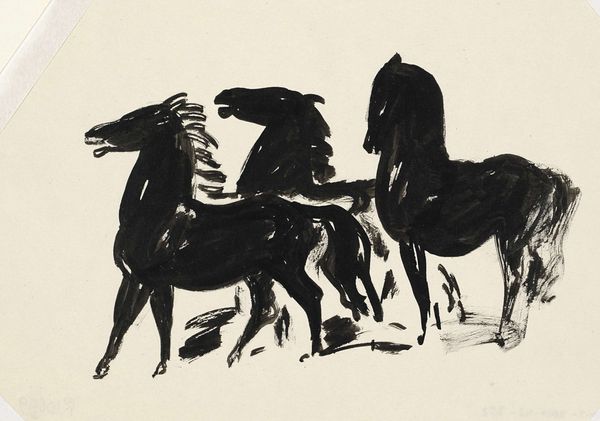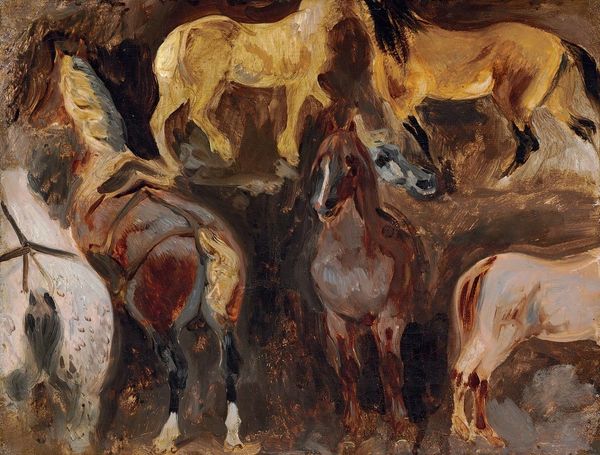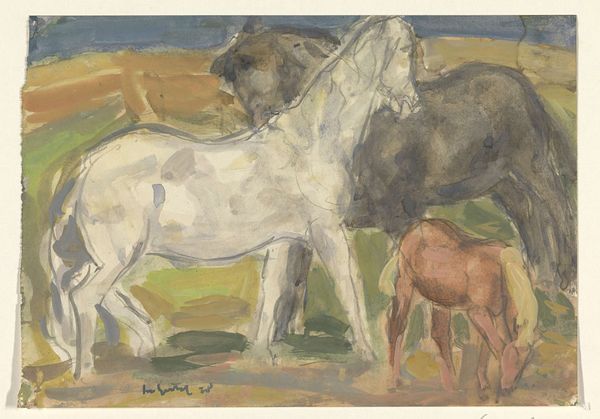
painting, gouache
#
animal
#
painting
#
gouache
#
landscape
#
caricature
#
figuration
#
oil painting
#
naïve-art
#
naive art
#
painting painterly
#
watercolour illustration
#
portrait art
Copyright: Public Domain: Artvee
Editor: We’re looking at Cyprián Majerník’s "Horses," painted in gouache around 1936 or 37. There's a kind of flattened quality to the forms, almost like a child’s drawing, but with a strange underlying tension. What can you tell me about the materiality of this piece? Curator: Well, consider gouache, often seen as a 'lesser' medium than oil, traditionally used for studies or illustration. Majerník elevates it here, using its opacity to create solid blocks of colour and de-emphasize any painterly depth. Note how the pigment sits on the paper, drawing attention to its own presence and process. Editor: So you're saying the *how* of its making is as important as the *what*? How does this impact meaning? Curator: Precisely. Think of the socio-political context: it's pre-war Czechoslovakia. The naive style can be viewed as a deliberate move away from academic traditions, embracing a rawer, perhaps even "folk" aesthetic, potentially as a comment on national identity, on artmaking itself. Look how the land seems compressed, the animals solid forms in a fabricated setting; in doing this, the means by which this scene is conveyed gains additional import. Does that resonate with you? Editor: Absolutely. It feels less like a depiction of horses and more about the very idea of them, flattened and processed. The materiality highlights the conscious crafting. Curator: Exactly! It makes us question what is being communicated, what these figures and that scene represented and stood for during that era. Editor: I hadn't considered the process of using gouache as a conscious choice with real socio-political weight. It really shifts my understanding. Curator: And it’s precisely that interplay between the artist, materials, and historical moment that unlocks a deeper engagement with the work, I'd say.
Comments
No comments
Be the first to comment and join the conversation on the ultimate creative platform.
